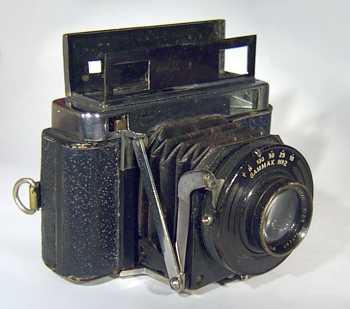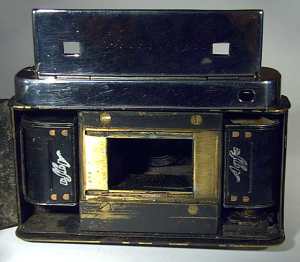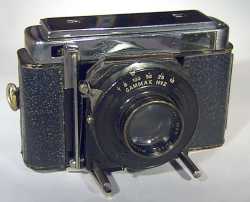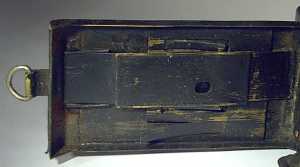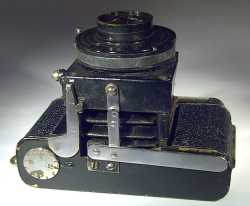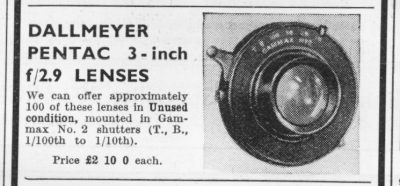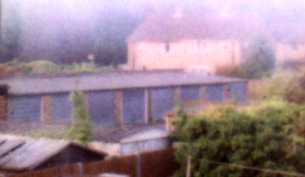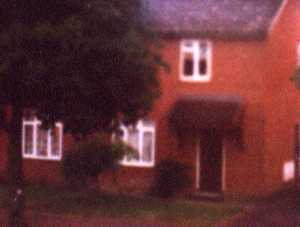 |
|||||||||||||||||||||||||||||||||||||||||||||||||||||||||||||||||
|
|
|||||||||||||||||||||||||||||||||||||||||||||||||||||||||||||||||
|
Click here for complete Site Map
On getting it home - we found the back opened quite easily. No catch, just tight fitting - and pulling on the ring opened it. We also discovered that the ring operated a bar which moved the film from one cassette to the other and also operated the film counter. We were very fortunate in finding 2 very nice Agfa Karat cassettes in the camera as well as the one in the case. Some of the other features took a little bit more time to figure out. Focusing is by the lever on the bottom - which also operates the coupled rangefinder. The rangefinder appears to no longer work - and there is no focus scale so this now really is by guess work! The body mounted shutter release also wasn't obvious and hung loose for a few days until we figured out how to fit it into place. Also as well as the rangefinder window, the camera appears to have 2 viewfinders. This I think is to allow both eyes to frame the view - like binoculars. Other than the lens and shutter which are factory made - the rest of the camera seems handmade out of mainly brass. Workmanship is very good but lacks the consistency and smoothness that factory made equipment has. The rangefinder mechanism may well contain parts from another camera as the prisms/mirrors would be quite hard to produce.
There is a very good chance this camera’s lens/shutter is one of the 100 or so mentioned here. The date of 1938 would tie in well with the use of Agfa Karat cassettes. Alternatively its possible that these 100 lenses were the remains of a much longer production run and the lens/shutter was stripped from a camera originally fitted with this combination. Whilst this camera takes ordinary 35mm film strip - as the cassettes are non standard its a little bit more effort to use. It should be easy enough to reload the Karat cassettes in a darkroom - but I'd have to do my own film processing as finding somebody to process from the Karat cassettes might be difficult. As a work around I have done some tests using Polaroid i-zone film which I've loaded into the camera with the help of a changing bag. Click HERE for the complete procedure for doing this. The pictures below are some of the test results so far:
Value wise - this is a difficult camera to judge. I've certainly had a lot of fun loading i-zone film into it and figuring out exposure and focus. With all the bits which came with it - its worth at least the £15 we paid for it and as its probably a unique camera as a addition to the collection its been worthwhile. I'd be very happy to hear anybody's comments/questions on this camera and if anybody can shed any light on its history or design then I'd be very grateful. Got a question or can't find the info you are looking for? Click HERE to contact us. Click here for other camera shelves Click here for complete Site Map |
||||||||||||||||||||||||||||||||||||||||||||||||||||
|
All text and images Copyright © 2000-2011 Roland Givan, unless otherwise stated. All Rights Reserved. |
